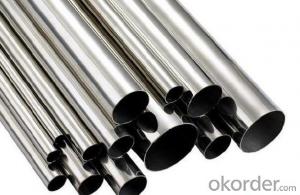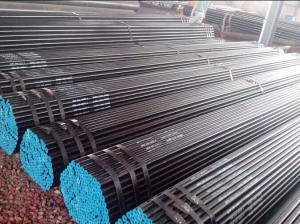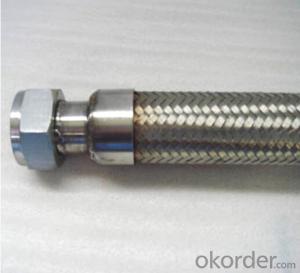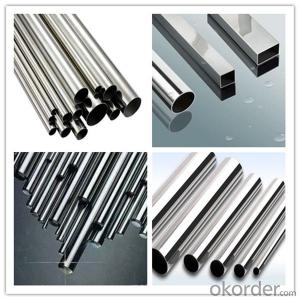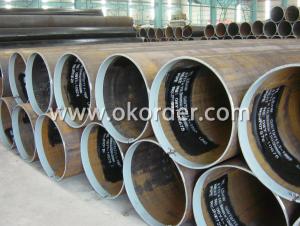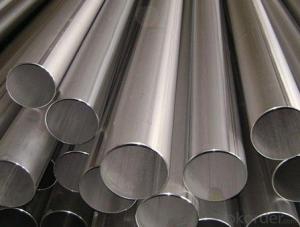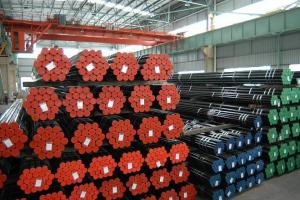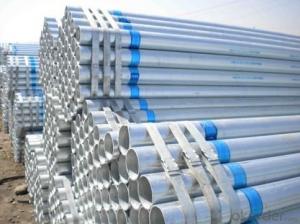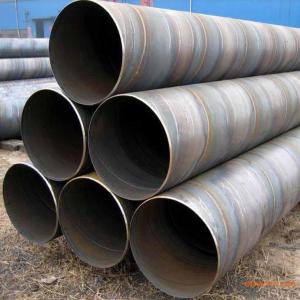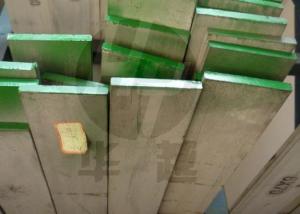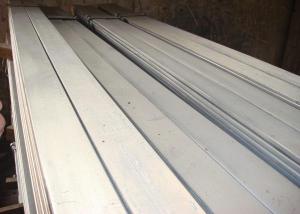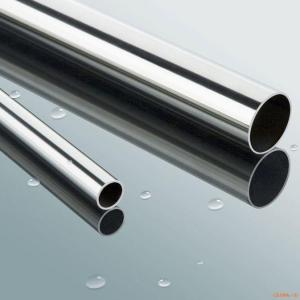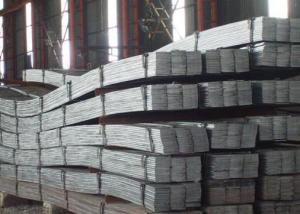ASTM 201 API 5L Stainless Steel Welding Pipe
- Loading Port:
- Tianjin
- Payment Terms:
- TT or LC
- Min Order Qty:
- 25 m.t.
- Supply Capability:
- 10000 m.t./month
OKorder Service Pledge
OKorder Financial Service
You Might Also Like
1、Structure of Welded Steel Tube:
We are company that have many years experience and professional manager team and engineer team and sales team, sure we will provide you high quality of pipe and professioanl service.Welded Steel Tube is formed by drawing a solid billet over a piercing rod to create the hollow shell. We are company that have many years experience and professional manager team and engineer team and sales team, sure we will provide you high quality of welded pipe and professioanl service.
2、Main Features of the Welded Steel Tube:
• High manufacturing accuracy
• The higher strength
• The small inertia resistance
• Strong heat dissipation ability
• Good visual effect
• Satisfy price
3、Welded Steel Tube Specification:
Standard | GB, DIN, ASTM ASTM A106-2006, ASTM A53-2007 |
Grade | 10#-45#, 16Mn 10#, 20#, 45#, 16Mn |
Thickness | 8 - 33 mm |
Section Shape | Round |
Outer Diameter | 133 - 219 mm |
Place of Origin | Shandong, China (Mainland) |
Secondary Or Not | Non-secondary |
Application | Hydraulic Pipe |
Technique | Cold Drawn |
Certification | API |
Surface Treatment | factory state or painted black |
Special Pipe | API Pipe |
Alloy Or Not | Non-alloy |
Length | 5-12M |
Outer Diameter | 21.3-610mm |
Grade | 20#, 45#, Q345, API J55, API K55, API L80, API N80, API P110, A53B |
Standard | ASME, ASTM |
1) Material:20#(ASTM A 106/A53 GRB.API5LGRB,GB),45#,16Mn,10#.
2) Specification range:OD:21.3-610mm,WT:6-70mm,length:6-12m or according to the requirement of clients.
3) Excutive standards:GB,ASME API5L.ASTM A 106/A53,Despite of the above standards,we can also supply seamless steel pipe with standard of DIN,JIS,and so on,and also develop new products according to the requirements of our clients!
4) Surface:black lacquered,varnish coating or galvanized.
5) Ends:Beveled or square cut,plastic capped,painted.
6) Packing:bundles wrapped with strong steel strip,seaworthy packing.
4、Packaging & Delivery
Packaging Details: | seaworthy package,bundles wrapped with strong steel strip |
Delivery Detail: | 15-30days after received 30%TT |
5、FAQ of Welded Steel Tube:
①How is the quality of your products?
Our products are strictly in accordance with international and domestic standard. We test on every pipe before delivery. Any quality certification or testing report you want to see, please tell us.
Guaranteed: If products’ quality is not in accordance with description as we provide or the promise before you place order, we promise 100% refund.
②How about the price?
Yes, we are factory and be capable of offering you the lowest price. One of our policy is that “ to save time and be absolutely honest with our business relationship, we quote as low as possible for every client, and discount can be given according to the quantity”, if you are interested in bargain and dissatisfy our factory price, just don’t waste your time. Our quotation is professional.
③Why should you choose us?
Choice happens because of our quality and price. Additionally, we can also offer professional products inquiry, products knowledge train (for agents), fast goods delivery, outstanding customer solution proposals. Our service formula: good quality + good price + good service=customer’s trust.
SGS test is available. Customer inspection before shipping is welcome. Third party inspection is OK.
6、 Welded Steel Tube Images:
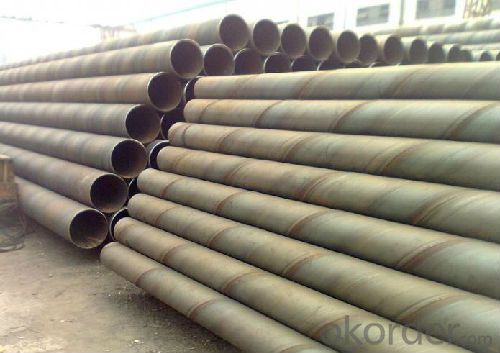
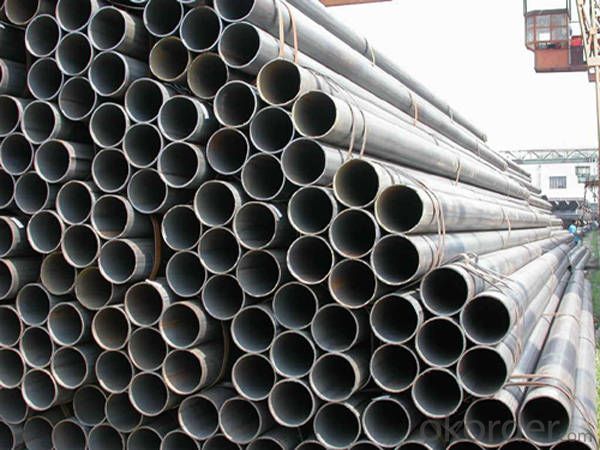
- Q: Can stainless steel pipes be used for swimming pool systems?
- Yes, stainless steel pipes can be used for swimming pool systems. Stainless steel is highly resistant to corrosion, making it an ideal choice for pool applications where exposure to chlorine and other chemicals is common. Additionally, stainless steel pipes offer durability, longevity, and excellent performance in high-temperature environments, making them a reliable option for swimming pool systems.
- Q: What is the cost of stainless steel pipes compared to other materials?
- The cost of stainless steel pipes compared to other materials can vary depending on various factors such as the type of stainless steel used, the size and thickness of the pipes, and the current market conditions. In general, stainless steel pipes tend to be more expensive than pipes made from other materials like carbon steel or PVC. Stainless steel is known for its high corrosion resistance, durability, and strength, making it a preferred choice in industries where these properties are essential, such as oil and gas, chemical processing, and food processing. However, the higher cost of stainless steel pipes can be justified by their long-term benefits and lower maintenance requirements. Additionally, stainless steel pipes offer advantages over other materials in terms of hygiene and cleanliness, as they are easy to clean, non-porous, and resistant to bacteria growth. This makes stainless steel pipes suitable for applications in the pharmaceutical, medical, and food industries. It is important to consider the specific requirements of the project or application when comparing the cost of stainless steel pipes to other materials. While stainless steel pipes may have a higher upfront cost, their superior performance, longevity, and resistance to corrosion can often result in cost savings over the long term.
- Q: Can stainless steel pipes be used for dairy processing equipment?
- Indeed, dairy processing equipment can utilize stainless steel pipes. Stainless steel is widely favored in the food and beverage sector owing to its remarkable resistance to corrosion, hygienic qualities, and long-lasting nature. Its exceptional ability to ward off rust, stains, and contamination renders it highly suitable for employment in dairy processing equipment, where cleanliness and food safety are of utmost importance. Furthermore, stainless steel pipes possess the capability to endure elevated temperatures and pressures, which are frequently necessary in dairy processing operations. All in all, stainless steel pipes prove to be a dependable and appropriate material for incorporation in dairy processing equipment.
- Q: Can stainless steel pipes be used for oil refinery applications?
- Oil refinery applications can indeed use stainless steel pipes. Due to its exceptional resistance to corrosion, high durability, and strength, stainless steel is widely utilized in the oil and gas industry. Oil refineries face harsh and corrosive environments, including exposure to various chemicals, high temperatures, and pressure. Stainless steel pipes have the ability to withstand these conditions and provide long-lasting performance. Stainless steel pipes possess resistance to corrosion resulting from acidic and alkaline substances, which are commonly present in oil refinery operations. They also exhibit excellent resistance against pitting and crevice corrosion, making them ideal for handling crude oil, petroleum products, and other corrosive media. Moreover, stainless steel pipes can handle high temperatures without compromising their strength and integrity. This quality is crucial in oil refineries where heating and cooling processes are involved. Apart from corrosion resistance and high-temperature capabilities, stainless steel pipes also possess exceptional mechanical properties. They are robust, durable, and possess good weldability, making them suitable for the demanding conditions of oil refinery applications. In conclusion, stainless steel pipes are a reliable option for oil refinery applications due to their corrosion resistance, high-temperature capabilities, and mechanical properties. They ensure the safe and efficient transportation of oil and petroleum products, thereby contributing to the seamless operations of oil refineries.
- Q: What wire is used for welding of 316 stainless steel line?
- Inspection of assembly and tack welds;1, check the geometry and shape after assembly, whether it conforms to the provisions of the drawings. :2, assembly and assembly clearance is 1.5 - 2mm, using TIG welding, three point positioning welding,The welding seam position for the clock 3 points, 9 points and 12 points, the welding materials used should be the same as the welding materials, welding length is 10 15mm, welding requirements and guarantee no defect, the wrong side is less than 1.5 2mm.3, the group is not allowed to use strong assembly, the joint wall must be flush.4, when welding, there must be no air, slag, tungsten and crack.
- Q: Can stainless steel pipes be used for swimming pool installations?
- Yes, stainless steel pipes can be used for swimming pool installations. Stainless steel is highly resistant to corrosion and can withstand the harsh chemicals used in pool water. It is also durable, long-lasting, and can handle high water pressure.
- Q: What is the difference between 304J6 and 316J6 stainless steel pipes?
- The composition and properties of 304J6 and 316J6 stainless steel pipes are the main factors that differentiate them. 304J6 stainless steel is a variation of the widely used 304 stainless steel with low carbon content. It consists of approximately 18% chromium and 8% nickel, providing excellent corrosion resistance and durability. This grade finds application in various fields such as food processing, chemical processing, and architecture. On the other hand, 316J6 stainless steel is an austenitic grade known for its superior corrosion resistance compared to 304J6. It contains about 16-18% chromium, 10-14% nickel, and 2-3% molybdenum. The inclusion of molybdenum enhances its ability to withstand pitting and crevice corrosion in chloride environments, making it suitable for marine and coastal applications. Regarding mechanical properties, both grades exhibit satisfactory strength and toughness. However, due to its alloy composition, 316J6 stainless steel typically possesses higher tensile strength and hardness. In terms of price, 316J6 stainless steel pipes generally carry a higher price tag than 304J6 due to the increased cost of molybdenum. Consequently, the choice between the two grades depends on the specific requirements of the intended application and the desired level of corrosion resistance.
- Q: Can stainless steel pipes be used for oil and gas pipelines?
- Yes, stainless steel pipes can be used for oil and gas pipelines. Stainless steel is known for its excellent corrosion resistance, making it a suitable material for transporting oil and gas, which can contain corrosive elements. Stainless steel pipes can withstand high temperatures and pressures, making them ideal for oil and gas applications. Additionally, stainless steel is durable and long-lasting, reducing the risk of leaks or failures in the pipeline system. The use of stainless steel pipes for oil and gas pipelines ensures the integrity and reliability of the infrastructure, protecting both the environment and public safety.
- Q: What is the difference between polished and unpolished stainless steel pipes?
- The main difference between polished and unpolished stainless steel pipes lies in their appearance and surface texture. Polished stainless steel pipes have undergone a process to enhance their visual appeal, resulting in a shiny, mirror-like finish. On the other hand, unpolished stainless steel pipes maintain their natural, raw surface texture, which may appear duller and less reflective. The choice between polished and unpolished stainless steel pipes depends on the desired aesthetic and the specific application requirements.
- Q: Can stainless steel pipes be used for high-temperature applications?
- Yes, stainless steel pipes can be used for high-temperature applications. Stainless steel has excellent heat resistance properties, making it suitable for conveying hot fluids or gases. It can withstand high temperatures without losing its strength and durability, making it a reliable choice for various industrial, commercial, and residential applications that involve high-temperature environments.
Send your message to us
ASTM 201 API 5L Stainless Steel Welding Pipe
- Loading Port:
- Tianjin
- Payment Terms:
- TT or LC
- Min Order Qty:
- 25 m.t.
- Supply Capability:
- 10000 m.t./month
OKorder Service Pledge
OKorder Financial Service
Similar products
Hot products
Hot Searches
Related keywords
